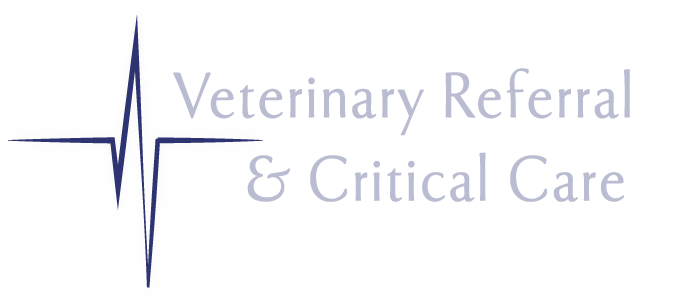Hypertrophic cardiomyopathy (HCM) is the most common heart disease affecting cats, and in rare cases can occur in dogs. Most cats with HCM are middle-aged to older, although all ages can be affected. (For more information about veterinary cardiology services, see this veterinary cardiology page)
Thousands of gene mutations are known to produce HCM in people, however at this time only two mutations have been found in certain cat breeds (Maine Coons and Ragdolls). The disease can range in severity from benign (causing no problems throughout the cat’s life) to life-threatening or even fatal. Many different factors determine how severe the disease may become in an individual animal.
Early recognition of heart disease and its consequences are key to preserving your cat’s quality of life. VRCC is open and staffed with a veterinarian 24 hours a day, 7 days a week, in order to care for your pet in any emergency.
HCM Disease Background
HCM is a primary disease of the heart muscle which impairs the function of the heart. The muscular walls of the heart (myocardium) become too thick. This increased thickness affects mainly the left ventricle, making it difficult for the heart to relax appropriately. Less blood is able to fill the cavity of the left ventricle, which can increase pressure in the left atrium. Ultimately this can lead to congestion within the lungs (pulmonary edema) or development of fluid within the chest cavity (pleural effusion), a process known as congestive heart failure. The abnormal heart muscle may also affect the electrical activity of the heart, producing an arrhythmia that can be discovered during physical exam or on an electrocardiogram (ECG or EKG).
Another common and serious complication of HCM in cats is arterial thromboembolism. Blood flow in the enlarged left atrium becomes sluggish (possibly seen on echo as “smoke”) and is prone to the formation of clots (thrombi). These thrombi can break off and travel through the arteries, often causing obstruction of the vessel. Large thrombi can obstruct the final portion of the aorta, commonly referred to as a “saddle thrombus”.
As a consequence, the blood supply to the rear part of the body is partially or completely blocked. Affected cats can present with sudden onset of pain, weakness or inability to walk (paresis or paralysis), or sudden death. Please seek immediate veterinary care for your cat if you notice any of these signs as this is an emergency situation.
Hypertrophic Cardiomyopathy Diagnosis
Most cats do not show clinical signs until their heart disease is advanced. Your veterinarian may recommend further work-up with a veterinary cardiologist if a heart murmur or extra heart sound (gallop) are found during routine physical examination, or if your pet is showing signs that could be due to heart disease.
Dr. Emily Olson, a board-certified veterinary cardiologist who works at VRCC, is available to perform the tests necessary to diagnose and treat patients with HCM. After reviewing the information provided by your veterinarian, Dr. Olson will obtain a complete medical history and discuss any concerns that you may have about your pet’s health. Dr. Olson will then perform a thorough physical examination to check for any abnormal heart or lung sounds, arrhythmias, changes in pulses, or other abnormal findings.
She may then recommend running tests such as radiographs (x-rays) of the chest, an echocardiogram (ultrasound of the heart), laboratory work, blood pressure and an ECG, depending on your pet’s needs. Radiographs can sometimes show that the heart is enlarged; however normal radiographs do not guarantee that the heart is normal. Radiographs are most beneficial to look for signs of congestive heart failure. An echocardiogram (“echo”) is an ultrasound of the heart that allows us to look for changes in the heart muscle thickness, atrial enlargement, and other changes to the heart.
An echo is necessary for diagnosis of HCM, as well as for monitoring disease progression and response to therapy. Additional tests such as blood pressure measurement and thyroid levels (T4) are usually necessary to make sure other conditions are not the cause for the abnormally thickened heart muscle.
These tests are non-invasive and sedation is rarely required. All tests can be performed during the visit, and results will be discussed with you prior to taking your pet home. Because HCM is a progressive disease, a normal echo does not guarantee that HCM will not develop in the future. In cats at increased risk for HCM (family history, certain breeds, etc.), repeated examinations and periodic echos may be recommended to screen for the disease.
Hypertrophic Cardiomyopathy Treatment
Unfortunately, there is no cure for this disease. Treatment is aimed at decreasing congestion in or around the lungs with diuretics, helping the heart muscle to relax and fill more easily, reduce this risk of clot formation, and treat any arrhythmias if necessary. Medications can allow many cats with congestive heart failure to live comfortably for months to even years. Other cats may not survive their first episode of congestive heart failure or thromboembolic event.
Prognosis is highly dependent on the severity of the disease at time of diagnosis, as well as other concurrent diseases the cat may have (such as kidney disease, diabetes, or high blood pressure).
Early recognition of heart disease and its consequences are key to preserving your cat’s quality of life. Your cat should be monitored for any sign of difficulty breathing, change in behavior (hiding, decreased activity), decreased appetite, change in gait or inability to walk, weight loss, or collapse. Please contact your veterinarian should you notice these signs, or seek immediate medical attention if your cat appears to be in distress.





No comments:
Post a Comment